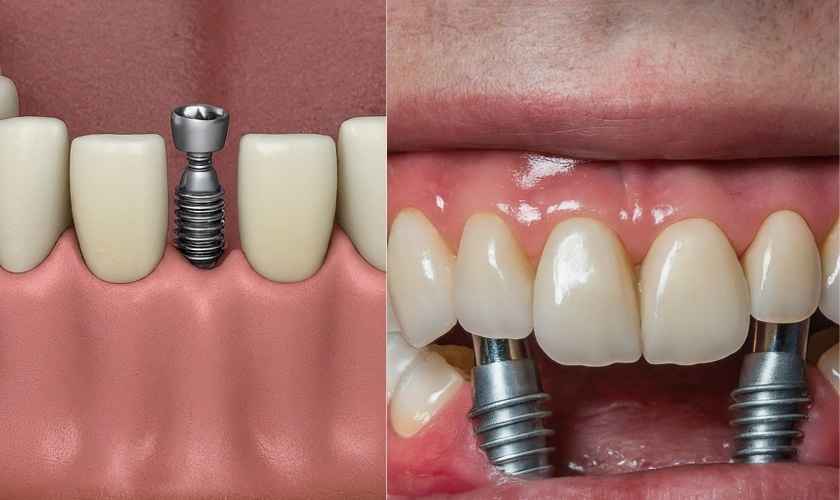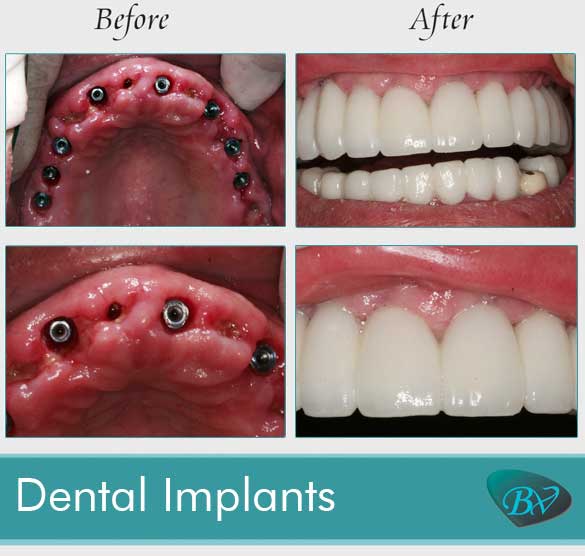More About Dental Sense
More About Dental Sense
Blog Article
The 45-Second Trick For Dental Sense
Table of ContentsWhat Does Dental Sense Do?Not known Details About Dental Sense 10 Easy Facts About Dental Sense ShownWhat Does Dental Sense Mean?
are medical gadgets surgically dental implanted into the jaw to recover an individual's capability to eat or their look. They supply assistance for fabricated (phony) teeth, such as crowns, bridges, or dentures. When a tooth is shed as a result of injury or illness, an individual can experience problems such as rapid bone loss, malfunctioning speech, or adjustments to chewing patterns that cause discomfort.Oral implant systems include a dental implant body and oral implant abutment and may additionally include a joint fixation screw. Wisdom tooth cavity. The oral implant body is operatively put in the jawbone in area of the tooth's origin. The oral implant joint is generally affixed to the implant body by the joint fixation screw and expands with periodontals into the mouth to support the attached synthetic teeth
(https://www.huntingnet.com/forum/members/dentalsense1.html)Structure of The Dental Implant System choosing oral implants, speak with your dental company regarding the potential advantages and dangers, and whether you are a candidate for the treatment. Points to think about: Your overall health is an important factor in determining whether you are a good candidate for dental implants, how much time it will certainly take to heal, and just how long the implant might remain in area.
Smoking might affect the recovery process and lower the long-term success of the dental implant. The healing process for the dental implant body might take several months or longer, during which time you commonly have a short-term abutment in location of the tooth. the dental implant treatment: Meticulously adhere to the dental hygiene directions offered to you by your dental copyright.
Dental Sense - The Facts
Implant failing can cause the demand for one more operation to repair or change the implant system. Restores the capability to eat Brings back cosmetic appearance Helps maintain the jawbone from shrinking due to bone loss Maintains the health of the bordering bone and periodontals Aids maintain adjacent (neighboring) teeth stable Boosts high quality of life Damages to bordering natural teeth during implant positioning Injury to the surrounding cells during surgical procedure, such as sinus opening Injury throughout surgical treatment (for instance, crack of surrounding jawbone) Insufficient feature, such as really feeling like the teeth do not attack together usually A feeling that the tooth is loose or twisting in position arising from a joint screw loosening up Implant body failing (looseness of the dental implant body) as a result of systemic infection, which might be most likely in individuals with uncontrolled diabetes mellitus as a result of regional infection in bone and periodontals sustaining the implant body because of postponed recovery, which may be a lot more most likely in people who smoke Trouble cleaning the periodontals around the implant, causing inadequate dental hygiene Untreated gum condition Post-surgical tingling due to nerve impingement or damage Constantly inform health treatment suppliers and imaging service technicians that you have dental implants prior to any kind of magnetic vibration imaging (MRI) or x-ray procedures.
FDA is not knowledgeable about any negative events reported for MRI or x-ray treatments with oral implants. Dental implants systems are generally made from materials that adhere to global consensus standards of the International Organization for Standardization (ISO) or ASTM International. These requirements have details of what makes a safe product.

An oral implant is a framework that changes a missing tooth. With screw-like gadgets, the specialist inserts an implant right into the jawbone, and it acts as a support for a synthetic tooth, called a crown. A tool called an abutment attaches the synthetic tooth to the oral implant. The crown is personalized to fit the person's mouth and match the color of their teeth.
Not known Facts About Dental Sense
Some people are not qualified for oral implant surgical procedure. It is for dental doctors to run on people with: intense illnessuncontrollable metabolic diseasebone or soft tissue condition or infectionIf these problems are settled, an individual can you can try here have the surgical procedure. In, dental doctors avoid operating people with: If people with any of the above go through oral implant surgical treatment, there is a greater risk of the dental implant failing.

Oral implant surgical procedure is a tailored process. It's not the very same for everyone. The complying with offers a basic overview of what you can expect your dentist, dental specialist, periodontist or prosthodontist to do: Put the dental implant operatively. Offer you time to recover. Attach the message and final crown, bridge or denture.
Next off, your surgeon will very carefully put the dental implant into your jaw. Lastly, your cosmetic surgeon will reposition your periodontals and close the incision with stitches. If your dental implant is near the front of your mouth, your dental professional will make a short-term tooth for you to wear till you recover. In this way, you won't have a gap in your smile while you recover.
Getting The Dental Sense To Work
Throughout the recovery stage, your jawbone should fuse to the oral implant. This process can take anywhere from 3 to nine months.
As soon as your implant heals, your dental practitioner can attach the joint (tiny adapter post) and your last reconstruction (crown, bridge or denture). This typically takes about one hour to complete and might need a second small surgery. You shouldn't really feel any type of discomfort during your dental implant treatment because your provider will make use of medication to numb your gum tissues.
Report this page